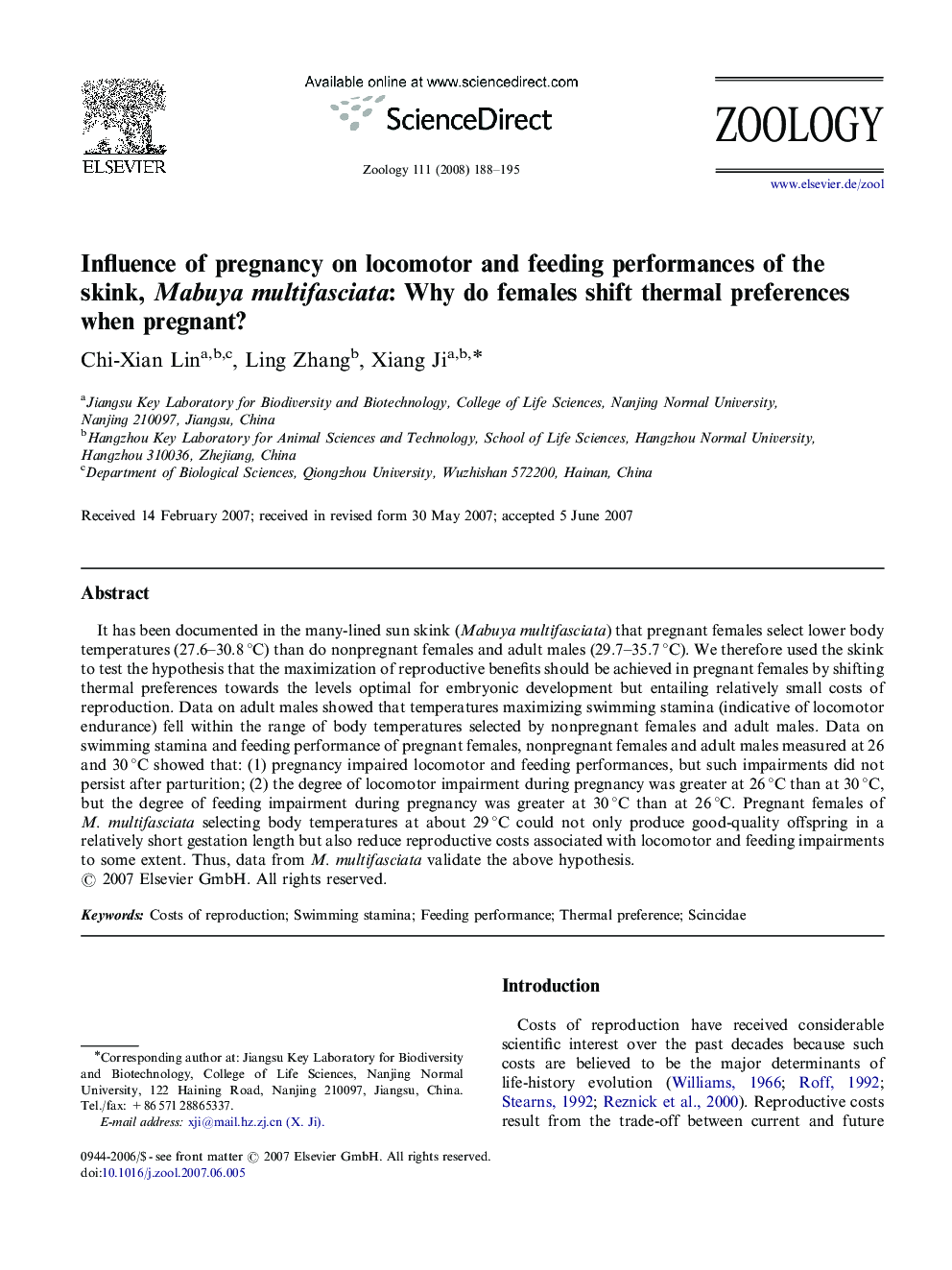| Article ID | Journal | Published Year | Pages | File Type |
|---|---|---|---|---|
| 2791356 | Zoology | 2008 | 8 Pages |
It has been documented in the many-lined sun skink (Mabuya multifasciata) that pregnant females select lower body temperatures (27.6–30.8 °C) than do nonpregnant females and adult males (29.7–35.7 °C). We therefore used the skink to test the hypothesis that the maximization of reproductive benefits should be achieved in pregnant females by shifting thermal preferences towards the levels optimal for embryonic development but entailing relatively small costs of reproduction. Data on adult males showed that temperatures maximizing swimming stamina (indicative of locomotor endurance) fell within the range of body temperatures selected by nonpregnant females and adult males. Data on swimming stamina and feeding performance of pregnant females, nonpregnant females and adult males measured at 26 and 30 °C showed that: (1) pregnancy impaired locomotor and feeding performances, but such impairments did not persist after parturition; (2) the degree of locomotor impairment during pregnancy was greater at 26 °C than at 30 °C, but the degree of feeding impairment during pregnancy was greater at 30 °C than at 26 °C. Pregnant females of M. multifasciata selecting body temperatures at about 29 °C could not only produce good-quality offspring in a relatively short gestation length but also reduce reproductive costs associated with locomotor and feeding impairments to some extent. Thus, data from M. multifasciata validate the above hypothesis.
